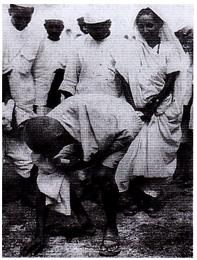What are the objective of gandhi …

CBSE, JEE, NEET, CUET
Question Bank, Mock Tests, Exam Papers
NCERT Solutions, Sample Papers, Notes, Videos
Posted by Arpana Pathak 3 years, 11 months ago
- 1 answers
Related Questions
Posted by Savitri Yadav 1 year, 5 months ago
- 1 answers
Posted by Divyaraj Rathore 1234 1 year, 4 months ago
- 1 answers
Posted by Kimka Samte 1 year, 4 months ago
- 0 answers
Posted by Monika Parajuli 1 year, 4 months ago
- 1 answers
Posted by Koyal Makal 1 year, 5 months ago
- 0 answers
Posted by Manveer Singh 1 year, 5 months ago
- 0 answers
Posted by Account Deleted 1 year, 4 months ago
- 0 answers
Posted by Nimisha Nanu 1 year, 5 months ago
- 1 answers

myCBSEguide
Trusted by 1 Crore+ Students

Test Generator
Create papers online. It's FREE.

CUET Mock Tests
75,000+ questions to practice only on myCBSEguide app
 myCBSEguide
myCBSEguide

Sia ? 3 years, 11 months ago
Gandhiji felt that Purna Swaraj would not come on its own. It had to be fought for. He was very much worried about government’s Salt Law. In 1930, he decided to break this law.

According to the law, the state had a monopoly on the manufacture and sale of salt. Mahatma Gandhi and other prominent leaders of the freedom struggle thought that it was sinful to tax salt because it is an essential item of our food. Both the rich and the poor needed it equally. Gandhiji felt that his Salt March would become popular and would represent the general desire of freedom to a specific grievance shared by all. On 6 April, 1930, Gandhiji along with his followers marched for over 240 miles from Sabarmati to the coastal town of Dandi. Here, they broke the government law by gathering natural salt found on the seashore, and boiling sea water to produce salt. A large number of people including women participated in this historic march. The government tried to crush the movement through brutal action against peaceful satyagrahis. Thousands were arrested and sent to jail. But the movement played significant role in achieving freedom of India.
1Thank You